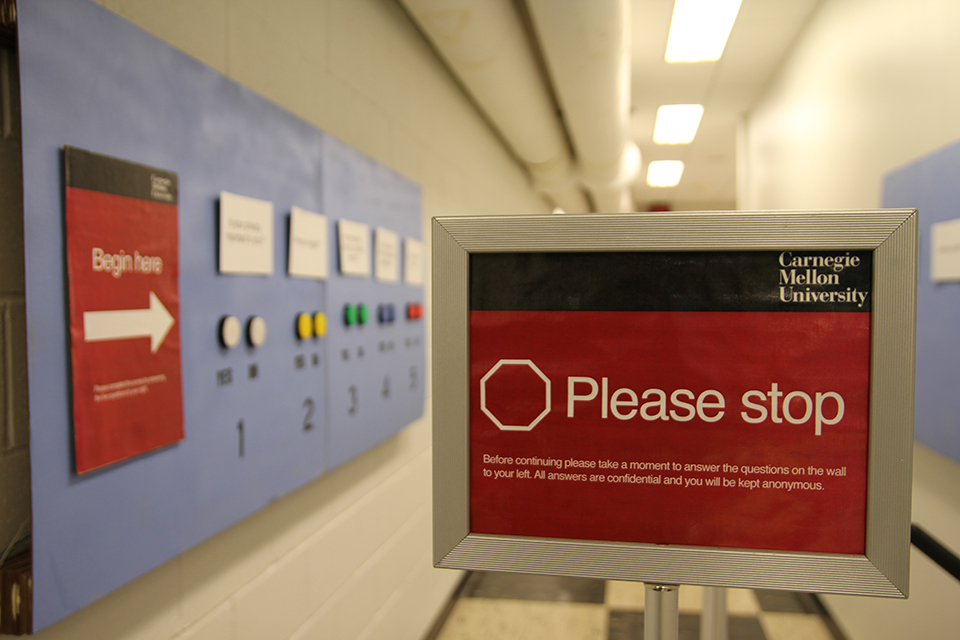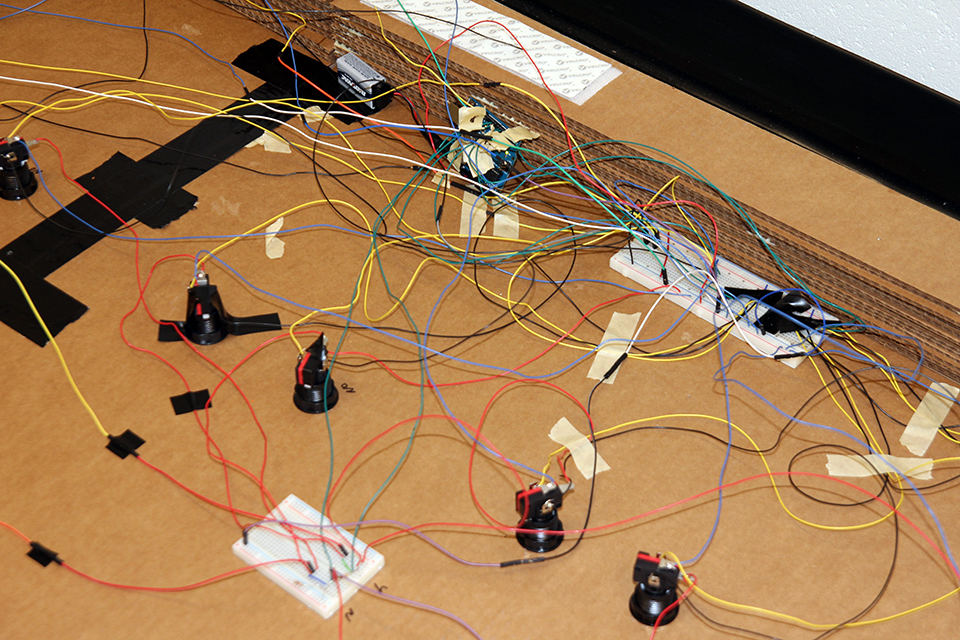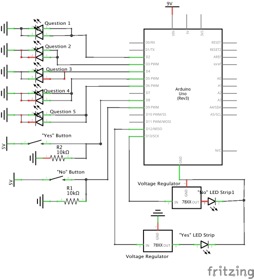1B – Arduino Project- Confidentiality Breach
|
Group Members: Zade Delgros, Becca Epstein, Wole Idowu, Ashley Lai, Alex Wang, Roles: Alex Wang as Tutor, Ashley Lai as Tutor, Zade Delgros as Integrator, Becca Epstein as designer, Wole Idowu as scribe IntroductionRecently there has been a rush of confidentiality breaches including Snowden, celebrity nudes, and Home Depot credit card information. We decided to toy with this idea of lost confidentiality by corrupting an official survey. We want each person to have a strong reaction to this loss so we chose extremely intimate questions of varying topics. The experience of this installation is of walking up, seeing an official CMU survey, and then having to decide whether or not to broadcast your most personal doings to the random passerby. One side of a hallway has questions with big buttons that lead you forward,, while the other has the questions listed again, and LED lit signs saying yes or no. The observer would have to be paying close attention to figure out which of your answers goes to which question. The wished for outcome of this piece is to cause the participant to have an emotional crisis and to bewitch the observer. VideoTechnical NotesOur survey works with a series of buttons that represent the choices for the yes/no questions we ask. There are five questions in total so ten buttons. Each button houses both a momentary switch as well as an LED. The LEDs light up two at a time depending on what question you are on. If you are on question one, the yes and no buttons will be illuminated until an answer is selected when the selections for the next question will then be lit up. We did this by connecting the LEDs in parallel and having them take an output from their respective momentary switch. Pressing the switch tells our Arduino’s code to loop through an array of length five which correspond to the questions. We connected 10 kilohm resistors to each of our buttons which helps to control the unstable noise that can occur when taking a sensitive input from a momentary switch. Answers to the survey questions are also coded to be yes or no. When an answer is selected, the Arduino sends an output to a 9-volt step-up regulator and then to one of two LED strips, illuminating either yes or no to display the user’s answer. Photos
To be added |










